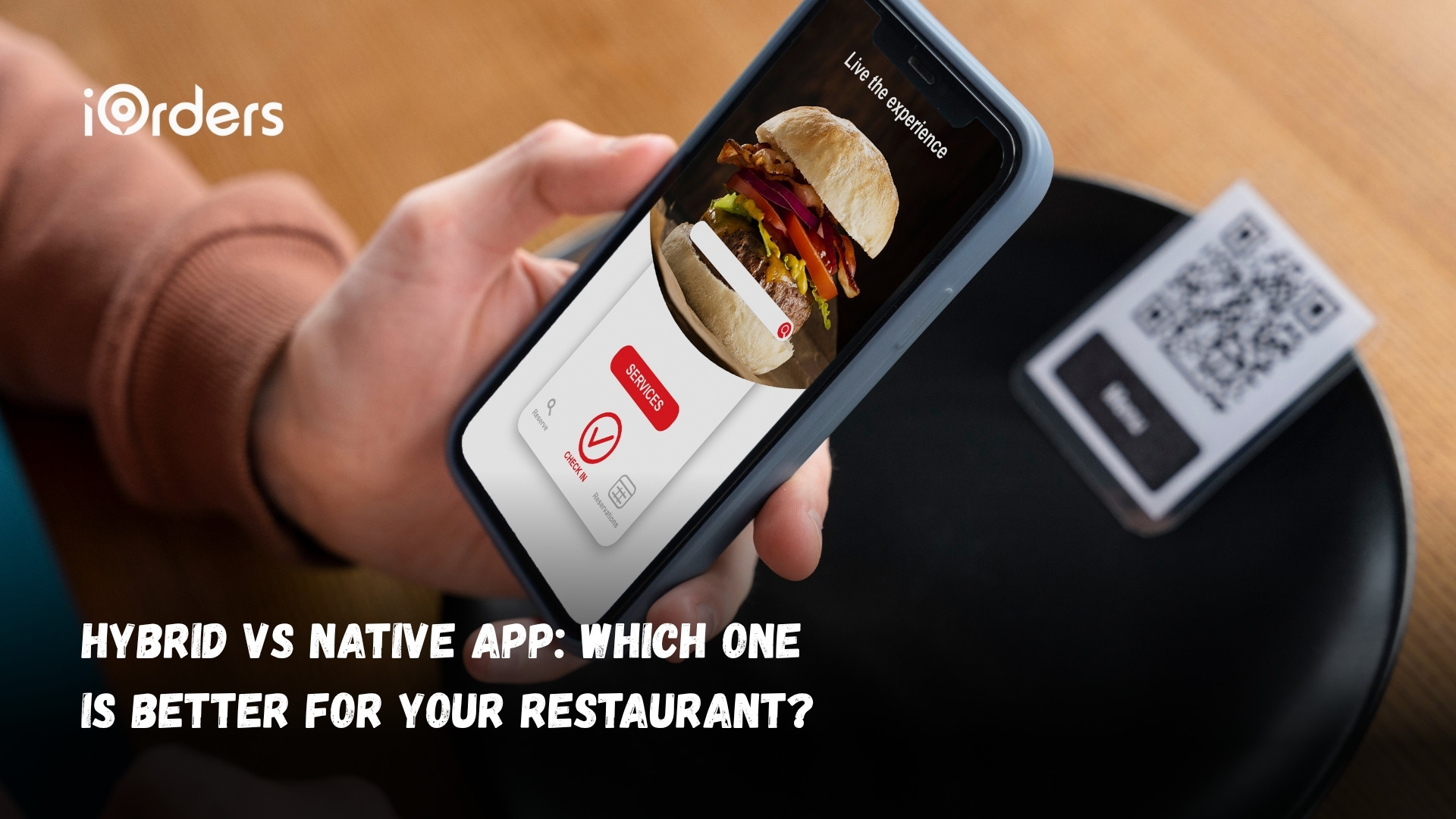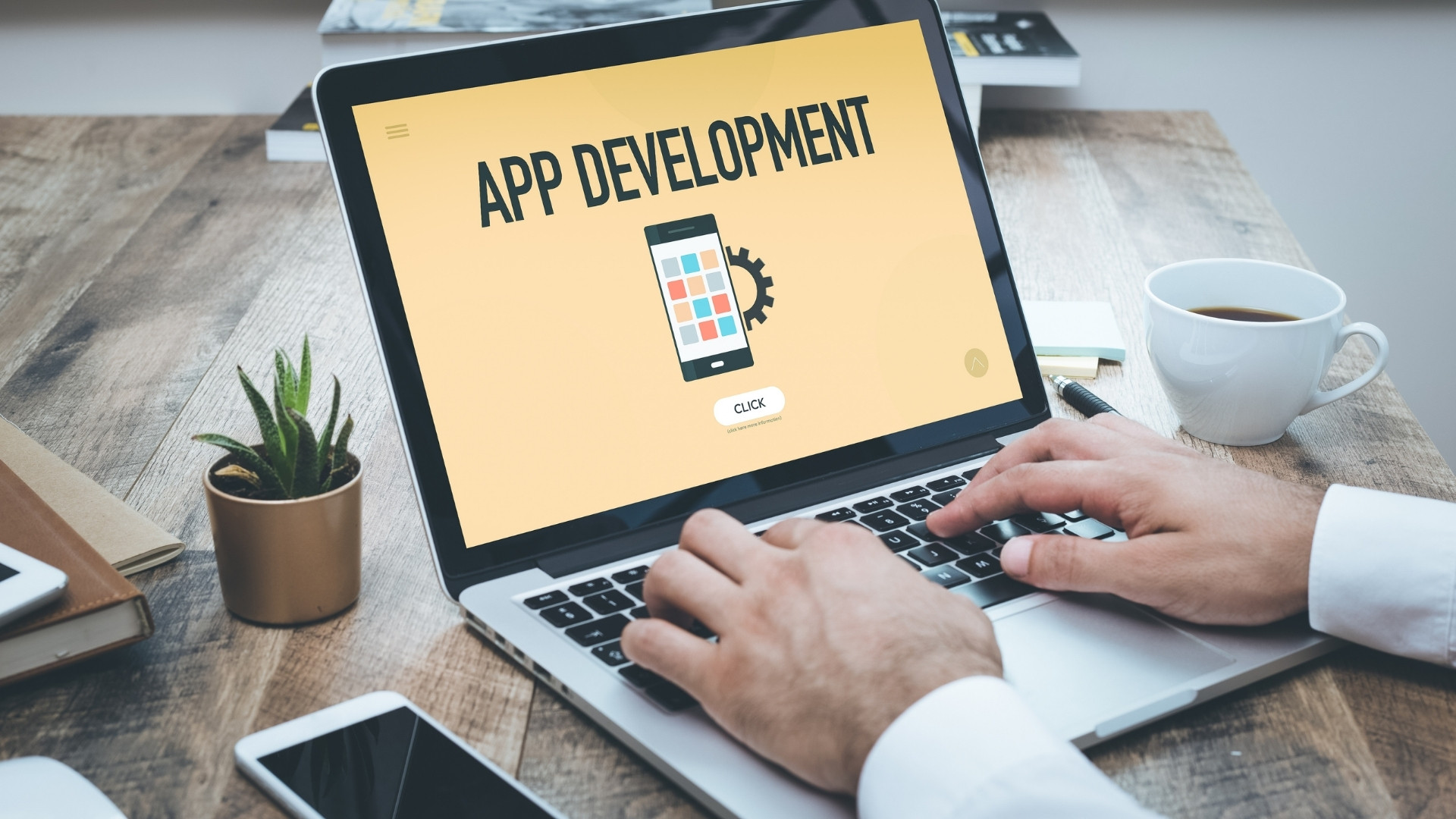October 30, 2025

Running a modern restaurant isn’t just about great food; it’s about convenience, speed, and digital accessibility. Whether customers order takeout, book tables, or join loyalty programs, their experience often starts with your mobile app.
So, which app should you choose? Native apps offer a sleek experience with push notifications, GPS delivery tracking, and smooth in-app payments. Hybrid apps, on the other hand, use a single codebase for iOS and Android, are faster to build, easier to maintain, and more cost-effective.
Both approaches have merit. The right choice depends on your goals, budget, and desired customer experience. This guide breaks down the differences between hybrid and native apps and helps you decide which best fits your restaurant’s strategy in 2025.
At a Glance:
Native apps are built specifically for one platform, iOS or Android, using their respective programming languages and design frameworks (Swift or Kotlin). This allows restaurants to create highly responsive, visually polished apps that feel seamless to use.

For brands prioritizing premium experience, speed, and integration with mobile hardware, native apps often deliver unmatched performance.
Here are the key features to consider when building a native restaurant app in 2025:
A well-built native app gives restaurants full control over performance, design, and user experience. While it requires higher upfront investment, it delivers unmatched reliability, faster response times, and deeper customer engagement, making it ideal for restaurants aiming to build strong digital loyalty and long-term brand differentiation.
Also Read: Cloud Kitchen Price Breakdown 2025: Real Costs, Smart Savings

Hybrid apps combine the best of both worlds — web and native — by using a single codebase that runs on multiple platforms. For restaurants aiming to launch quickly, reduce development costs, and maintain a consistent customer experience across devices, hybrid apps offer a practical, budget-friendly solution.
Here are five features that make hybrid apps stand out:
Hybrid apps are ideal for restaurants that want speed, affordability, and cross-platform functionality without compromising the user experience. They’re especially suited for growing brands that value flexibility and want to test digital engagement strategies before investing heavily in a fully native experience.
Also Read: How to Make a Small Restaurant Grow: Top 33 Tips
Choosing between a native and hybrid app can shape how your restaurant engages with customers, manages operations, and scales digitally. Both have strengths, but they serve different goals when it comes to performance, budget, and long-term flexibility. Here are five key differences every restaurant owner should understand:
Here’s a side-by-side look at how they compare across five key areas:
Native apps deliver the best experience and performance but demand higher investment and maintenance. Hybrid apps, on the other hand, balance affordability, speed, and usability, making them ideal for restaurants seeking quick digital growth without heavy technical overhead.
The right choice ultimately depends on your restaurant’s scale, goals, and how deeply you want to integrate technology into your customer journey.
Also Read: Hire and Retain Restaurant Employees: Top 12 Strategies
Selecting the right app for your restaurant isn’t just about technology, it’s about finding the best fit for your goals, operations, and customers.

Here are five essential factors every restaurant should evaluate before deciding between a hybrid or native app:
1. Business Goals and Budget: Start with clarity on what you want the app to achieve, including online ordering, loyalty programs, delivery tracking, or guest engagement. Native apps offer premium performance but come with higher upfront costs.
Hybrid apps, on the other hand, are more cost-efficient and perfect for restaurants seeking faster time-to-market with limited budgets.
2. Customer Experience Expectations: If your target audience expects high-speed performance, smooth visuals, and advanced features like real-time delivery tracking or push notifications, a native app may be worth the investment.
For restaurants where simplicity and accessibility matter most, a hybrid app provides a consistent, user-friendly experience at lower cost.
3. Integration with Existing Systems: Your app should work seamlessly with your POS, online ordering, CRM, and loyalty systems.
Hybrid apps typically integrate faster with existing web systems, while native apps can be tailored for deeper, more custom integrations that enhance automation and operational efficiency.
4. Maintenance and Scalability: Think long-term. Native apps require separate updates for iOS and Android, increasing ongoing maintenance costs. Hybrid apps are easier to maintain, as updates apply across platforms.
However, if you plan to scale with features like AI recommendations or dynamic menus, native apps offer better flexibility for future growth.
5. Speed to Market and Future Vision: If your goal is to launch quickly and start engaging customers right away, hybrid apps are ideal.
But if you’re building a long-term digital brand experience with deep personalization, faster performance, and potential AI or IoT integration, a native app gives you the foundation to grow.
Your restaurant’s app should reflect your brand’s priorities, whether that’s speed, cost-efficiency, or premium guest engagement. By weighing these five factors, you can choose the right app strategy that supports your restaurant’s operations today and scales with your ambitions tomorrow.

Digital convenience is no longer optional, it’s expected. iOrders helps restaurants stay competitive with a white-label mobile app that combines full brand ownership, AI-driven insights, and operational simplicity.
Beyond the app, iOrders offers a full suite of digital tools that help restaurants automate, scale, and thrive without depending on third-party platforms.
Here are some of its key features:
The iOrders mobile app isn’t just another digital ordering tool, it’s a fully branded platform that keeps revenue, customer data, and engagement where they belong: with your restaurant.
Here are some of the additional services in the iOrders’ ecosystem:
1. POS and Kitchen Display Integration: Orders from all channels, including app, website, or kiosk, sync directly with the restaurant’s POS and kitchen display systems. This eliminates manual entry, reduces wait times, and minimizes human error during peak hours.
2. Online Ordering Website: iOrders provides a responsive, SEO-optimized website that mirrors the mobile app. Customers can place orders directly from their browser, offering flexibility while maintaining a consistent brand experience.
3. Marketing and Customer Engagement Tools: Automated SMS, email, and push campaigns help restaurants reach customers at the right moment, from promotions and discounts to re-engagement after inactivity.
4. Delivery and Fleet Management: For restaurants managing in-house delivery, iOrders offers integrated driver tracking, route optimization, and delivery status updates, giving full visibility from kitchen to doorstep.
5. Data Analytics and Reporting: Comprehensive reports cover sales, customer lifetime value, and operational efficiency. These insights help owners make data-backed decisions and refine strategies across locations.
Beyond the app, iOrders delivers a connected ecosystem that simplifies operations, deepens customer relationships, and drives profitability. Restaurants gain enterprise-level technology built and priced for SMBs with no dependence on third-party delivery platforms.
Also Read: How to Start and Run a Successful Restaurant in 10 Simple Steps
Choosing between a hybrid and native app isn’t just a tech decision, it’s a business one. The right choice depends on your restaurant’s size, goals, and customer experience strategy. While native apps deliver top-tier performance and a seamless user journey, hybrid apps offer faster deployment, easier maintenance, and better cost efficiency — ideal for growing restaurants looking to scale quickly.
With iOrders’ white-label mobile app, restaurants don’t have to choose between performance and affordability. It combines the speed and flexibility of a hybrid build with the polished experience of a native app, all fully branded for your business. From online ordering to loyalty rewards, iOrders helps you deliver the kind of mobile experience today’s diners expect.
Book a free demo with iOrders today and discover how a fully branded mobile app can enhance your restaurant’s visibility, boost repeat orders, and strengthen customer loyalty
1. How do hybrid apps handle advanced device features compared to native apps in 2025?
Hybrid apps access device features through plugins and bridges, which means newer or specialized hardware integrations (like AR, biometric sensors, or advanced location) may have delayed or limited support compared to native apps, which get immediate, full-feature access.
2. What security trade-offs exist between hybrid and native apps for enterprise use?
Native apps benefit from platform-specific security patches, managed APIs, and stricter app store compliance. Hybrids can face vulnerabilities in their embedded webviews or open-source plugins, meaning extra auditing is needed for mission-critical or high-trust applications.
3. Are hybrid apps suitable for sustainable, update-heavy products?
Hybrid apps offer faster, unified updates across platforms, but rely heavily on external frameworks. If such frameworks lag in supporting new OS features, hybrid apps may fall behind in compatibility, making native apps a safer choice for long-term, update-intensive projects.
4. How do maintenance and scaling costs diverge as usage grows?
Hybrid apps start cheaper to build and maintain, thanks to code reusability. But as user numbers climb or new requirements emerge, native apps scale better and make deep optimizations easier, hybrids may hit hidden costs due to dependency conflicts and performance bottlenecks.
5. What are hybrid apps’ UX limitations for brand-driven or premium products?
UX in hybrid apps often feels less fluid, with subtle delays or UI inconsistencies compared to native apps, especially in brand-critical sectors like finance, entertainment, or high-end retail, where seamless interactions shape user loyalty.
6. Can hybrid and native strategies be blended for different business goals?
Many businesses now deploy a multi-tiered approach: using native for core, high-engagement features and launching supporting or B2B modules with hybrids or PWAs, maximizing reach while retaining top-tier UX where it matters most.
7. What’s the role of AI-enabled app builders in hybrid vs native development?
AI-powered platforms are emerging that simplify native app development, bridging some of the historic cost/time gaps with hybrids. In 2025, these tools are making native builds accessible to startups, shifting some advantages away from hybrids.